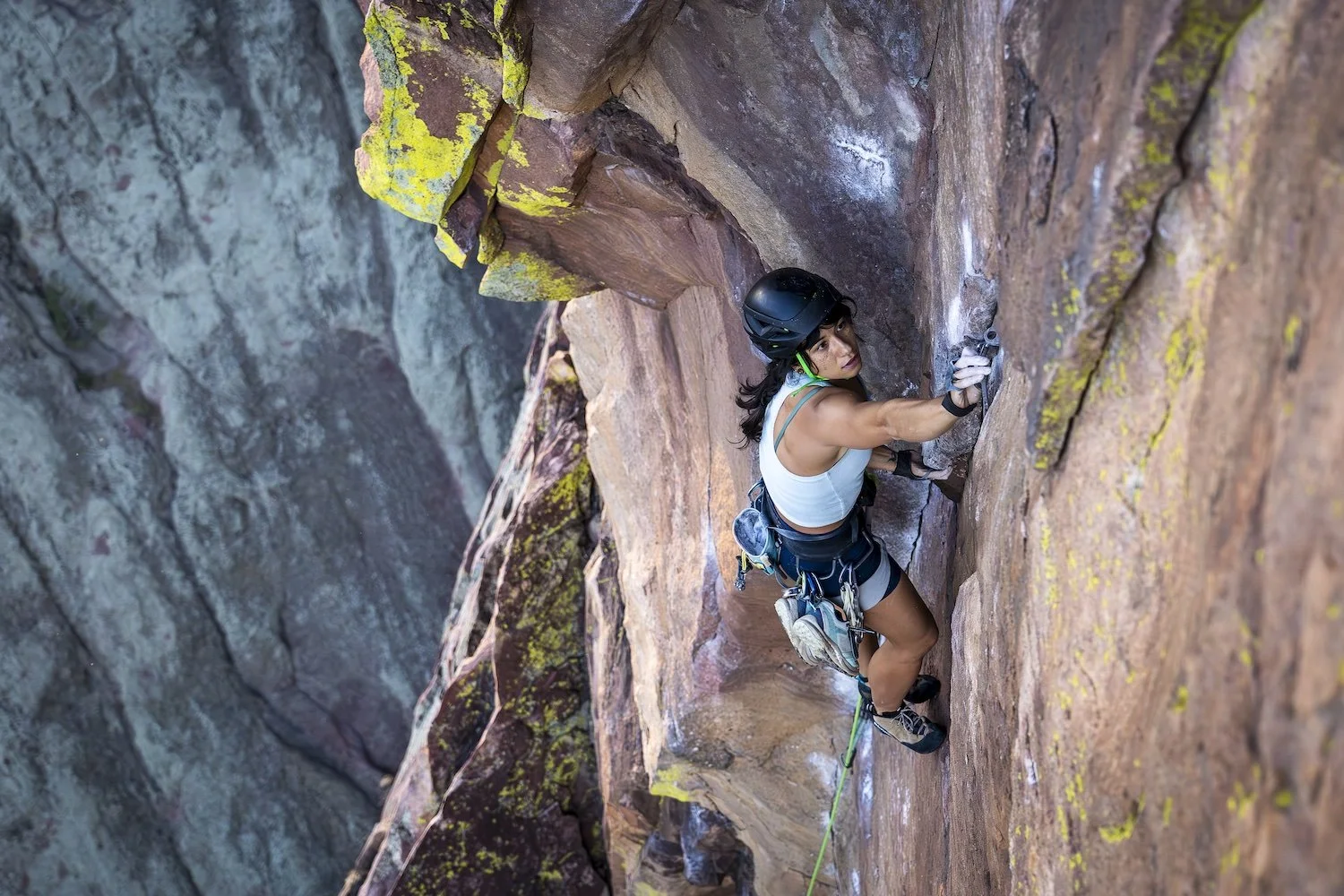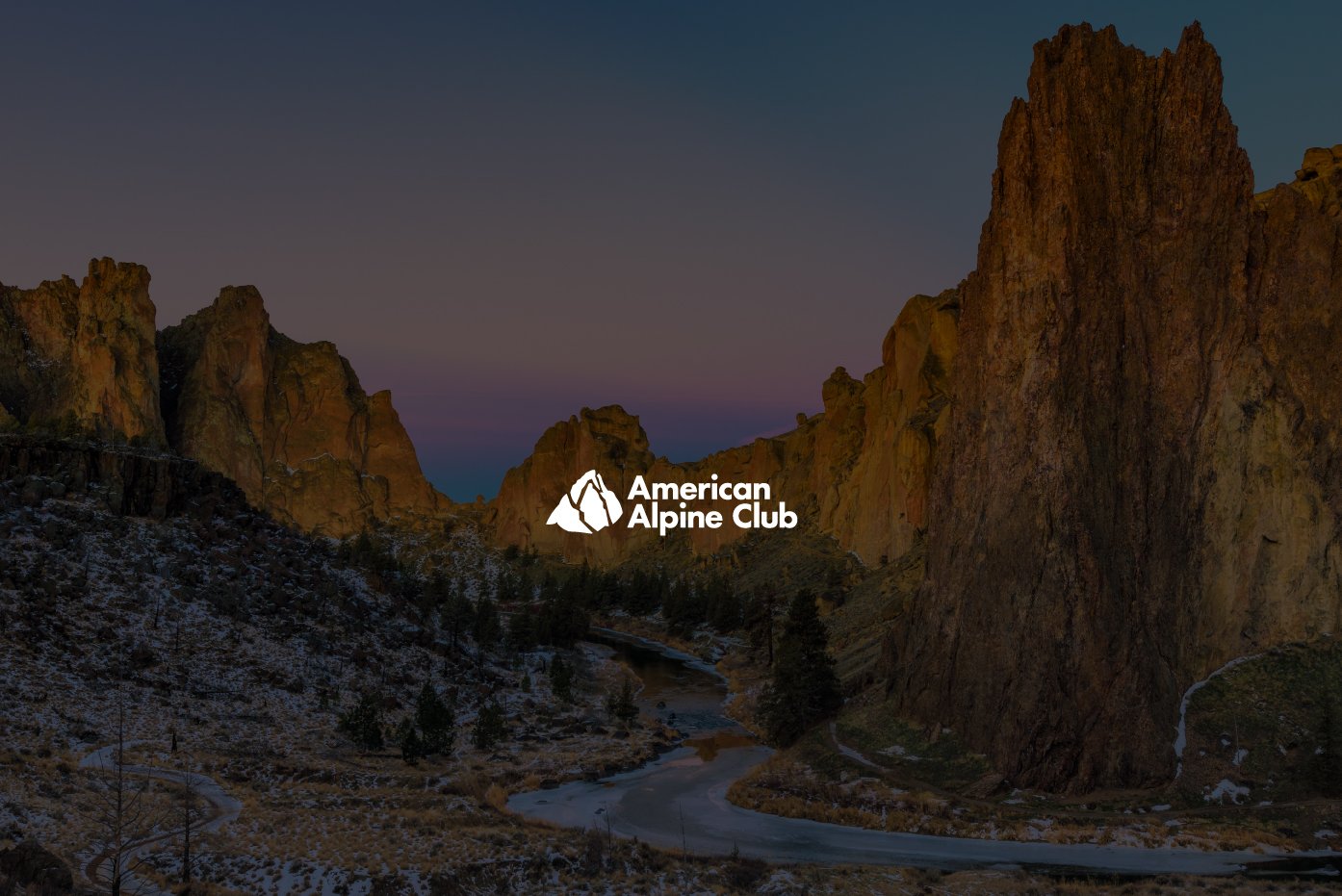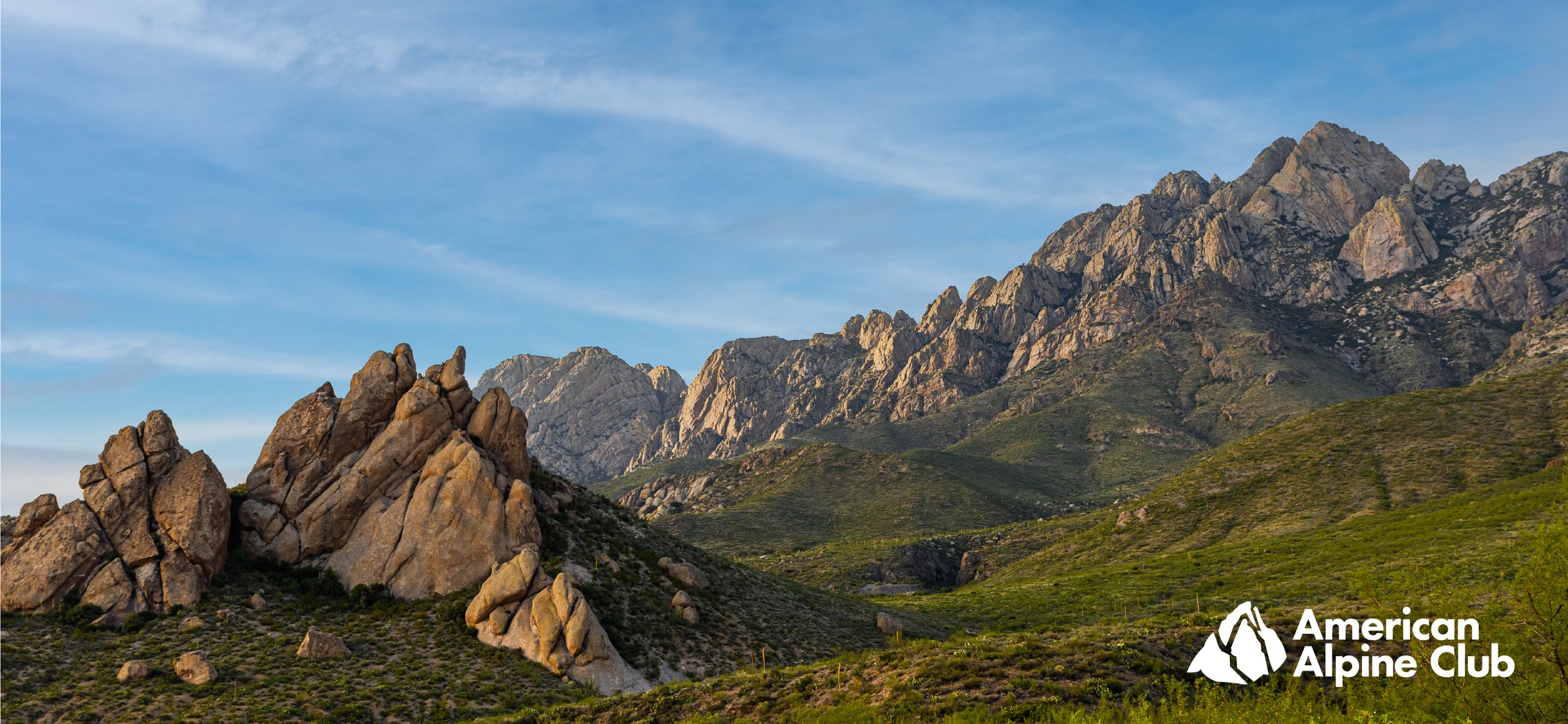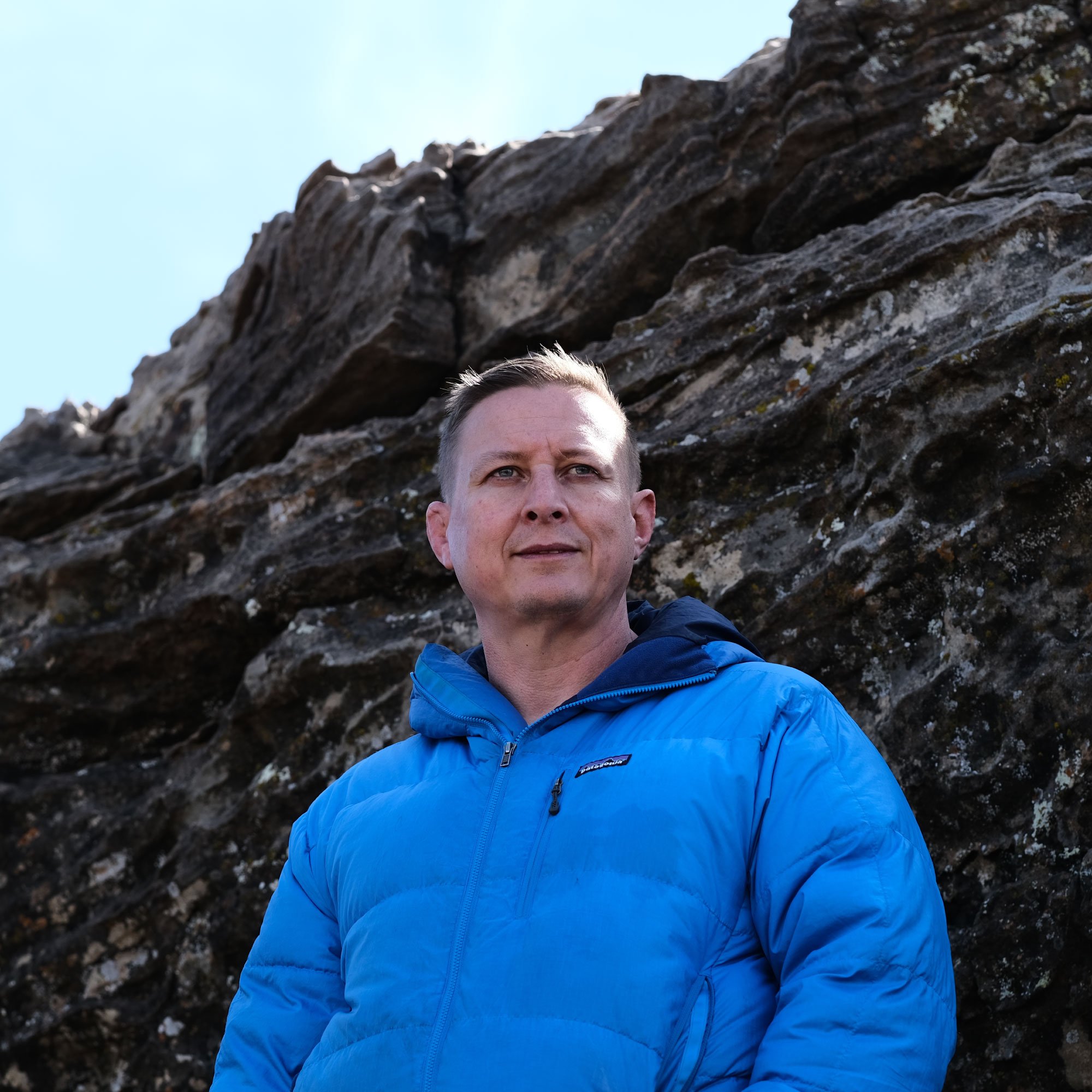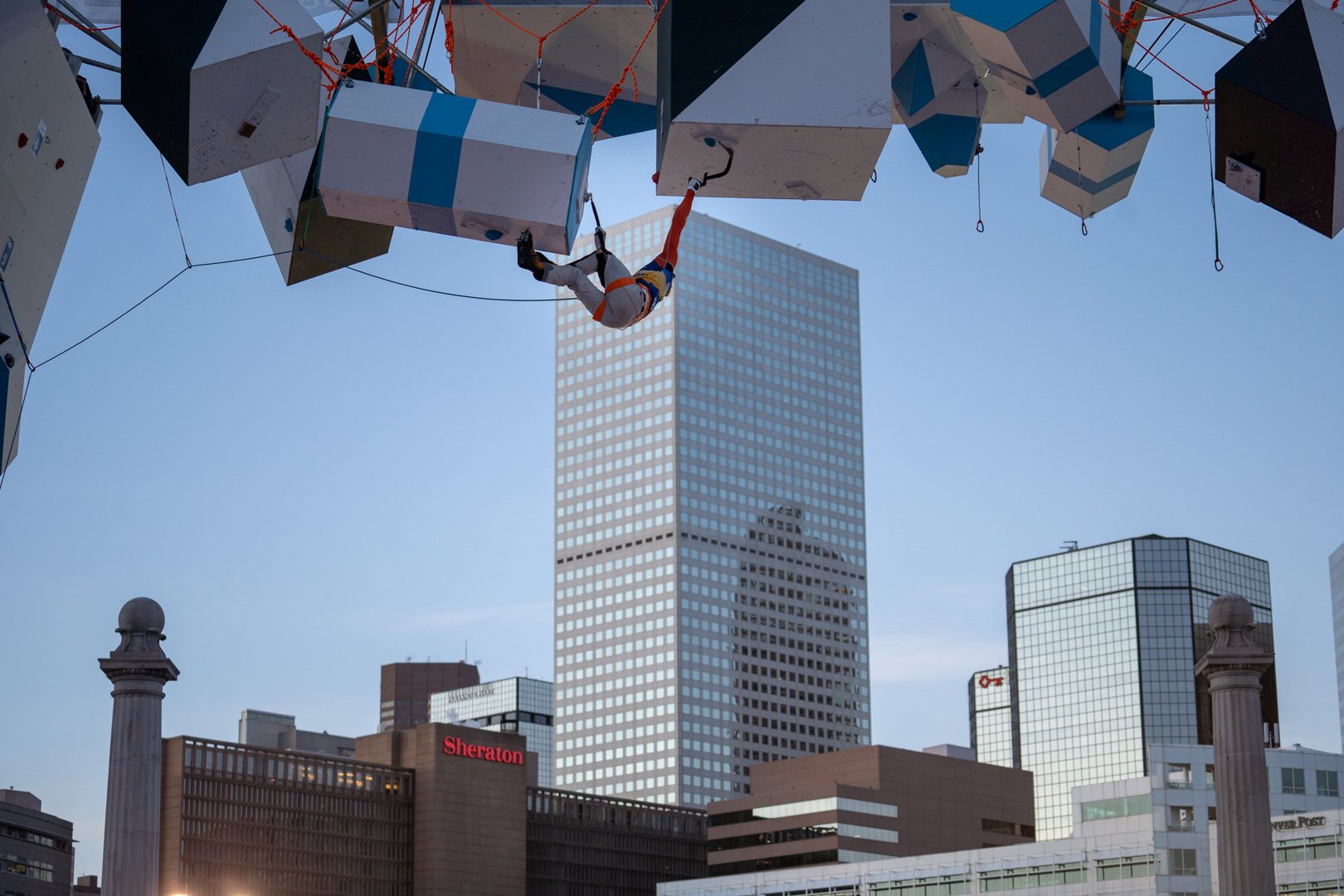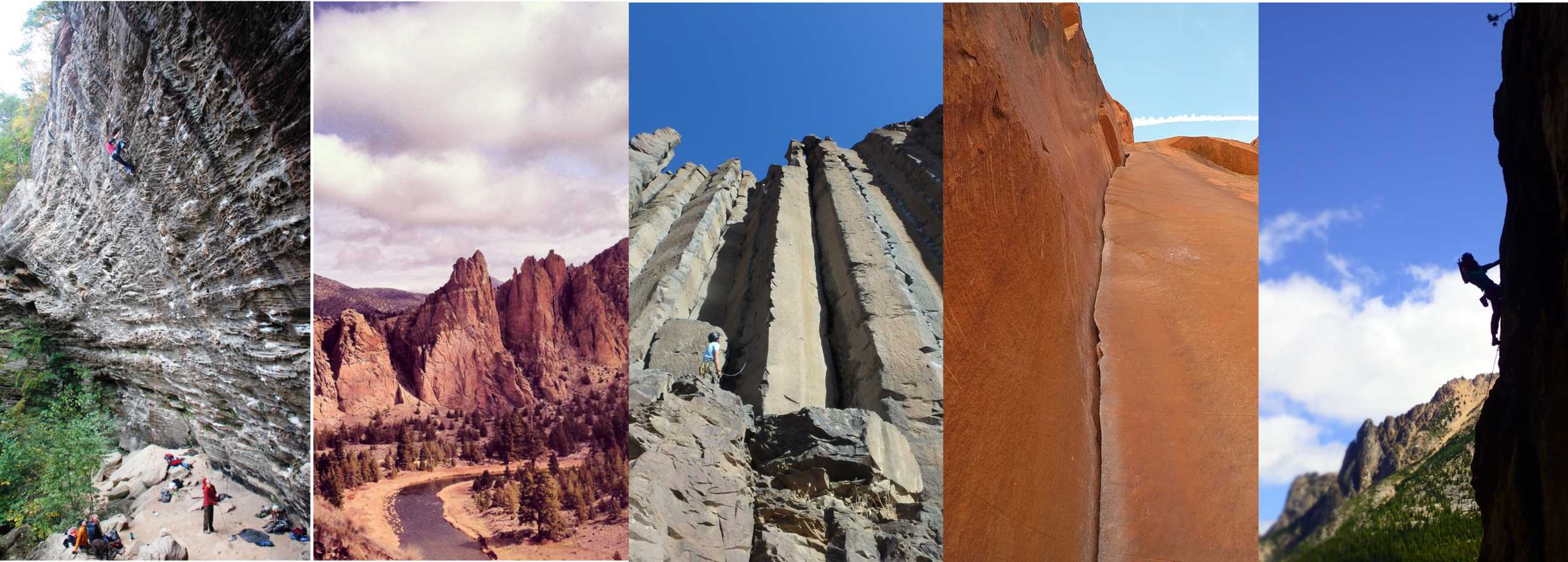A Message from AAC Leadership
AAC Board President Nina Williams approaching the Bombay Chimney on the fourth pitch of The Naked Edge (5.11b). Photo by AAC member Foster Denney.
Dear AAC Community,
It’s easy to think that, as climbers, all of our success stories are individual. After all, when it comes down to executing that final crux on your project, it’s you alone that reaches the top. But one of the things I love about the AAC, and the stories in this edition of The Guidebook, is how individual success is supported by community. The summit is not a vacuum; when we reach the top, our accomplishments are because of ourselves and also those whom we’ve leaned on and learned from.
In these pages, you’ll see that support unfold. In our Member Spotlight, “The Quiet Stories the Land Can Tell,” Rob Mahedy, normally a solo adventurer, learns through a battle with cancer what it means to accept support from his community in order to pursue the summit of Mt. Hayes in Alaska. In our Rewind the Climb story, “A World of Appalling Grandeur,” we celebrate the 100th anniversary of the first ascent of Mt. Logan—a joint expedition between the Alpine Club of Canada and the American Alpine Club that made a huge splash in the newspaper headlines of 1925, in a world that was just imagining that humanity could stand atop Everest. In a splendid deep-dive into corrosion in bolts, called “A Little Rust is All it Takes,” Stephen Gladieux illuminates the importance and impact of the UIAA Safety Commission, for which he is a representative for the AAC. Through SafeComm, the AAC is able to join forces with representatives from nations across the world and work together to formalize standards for climbing equipment and safety practices.
Our final story, “Balance,” is a feature about Brooke Raboutou, who will receive the Robert Hicks Bates Award this year for exceptional accomplishments by a young climber. It’s in her story that I see this interweaving of community so clearly. Brooke’s accomplishments do stand by themselves—silver medalist in the 2024 Olympics for bouldering & lead, an ascent of Box Therapy (V15) in addition to multiple V14’s, and now the first woman to climb 5.15c with her recent send of Excalibur. I have seen Brooke grow from a bright, curious team kid into the warm, determined athlete she is now. The seed of Brooke’s success grew and flourished under the sunshine of overwhelming support from her family, coaches, fellow athletes, and friends, who push and encourage her. She has developed her incredible strength and talent in part because of her environment. As a result, Brooke’s spirit is so vivid that she inspires her community— myself included—to cultivate that same spirit in themselves.
An interesting note: Brooke was nominated for the Bates Award before she sent Excalibur (5.15c) and became the first woman to climb the grade. Excalibur, then, is simply another example of her momentum. There are still frontiers for women to face and break in climbing, but as a community, we are no longer asking whether a woman can climb a given grade. We are just asking—when?
I bouldered with Brooke recently in Bishop, and we made a day of touring the classics. No need to prove anything; we weren’t chasing the most difficult climbs. Instead, we focused on climbing for sheer beauty and joy. What I see in these stories of perseverance and adversity, of pouring one’s life into climbing safety and education, and in Brooke’s story, is that beautiful impulse of climbing for the soul. I see that same impulse bring so many AAC members together.
I hope you enjoy these stories of your fellow members and that they inspire you to shine brightly, connect with others, and pursue your climbing aspirations this summer.
Nina Williams
AAC Board President
AAC Updates
Advocacy
The U.S. House of Representatives removed the public lands sell-off bill from the reconciliation package. The Senate subsequently proposed legislation that considered public lands sales in11western states, which was ultimately removed from the package following strong public opposition. The AAC continues to work with our partners, such as Outdoor Alliance, to coordinate responses to these efforts to introduce legislation that impacts our public lands.
The AAC Advocacy department will travel to Washington, D.C., in October to engage with lawmakers on a variety of issues and support Outdoor Alliance’s Grasstops Collective.
The AAC’s Advocacy Director was recently appointed to the UIAA’s Mountain Protection Commission. The commission, founded in 1969, is one of the foremost authorities regarding the question of sustainability in mountain regions.
Member Services
As of June, expenses up to $15,000 in mortal remains transport are now included in the rescue benefit at the Partner, Leader, Advocate, and Great Ranges Fellowship membership levels. Learn more at americanalpineclub.org/rescue.
The 2025 American Alpine Journal and Accidents in North American Climbing books were sent to the printer in June. If you’ve opted in to print copies, you can expect to receive your books in late summer.
Operations and Governance
The AAC Board of Directors met in Boulder, Colorado from June 6 to 8 for a Board retreat and meeting. The Board discussed strategic priorities for the upcoming fiscal year and future plans for the AAC, and enjoyed some Front Range climbing and dining!

